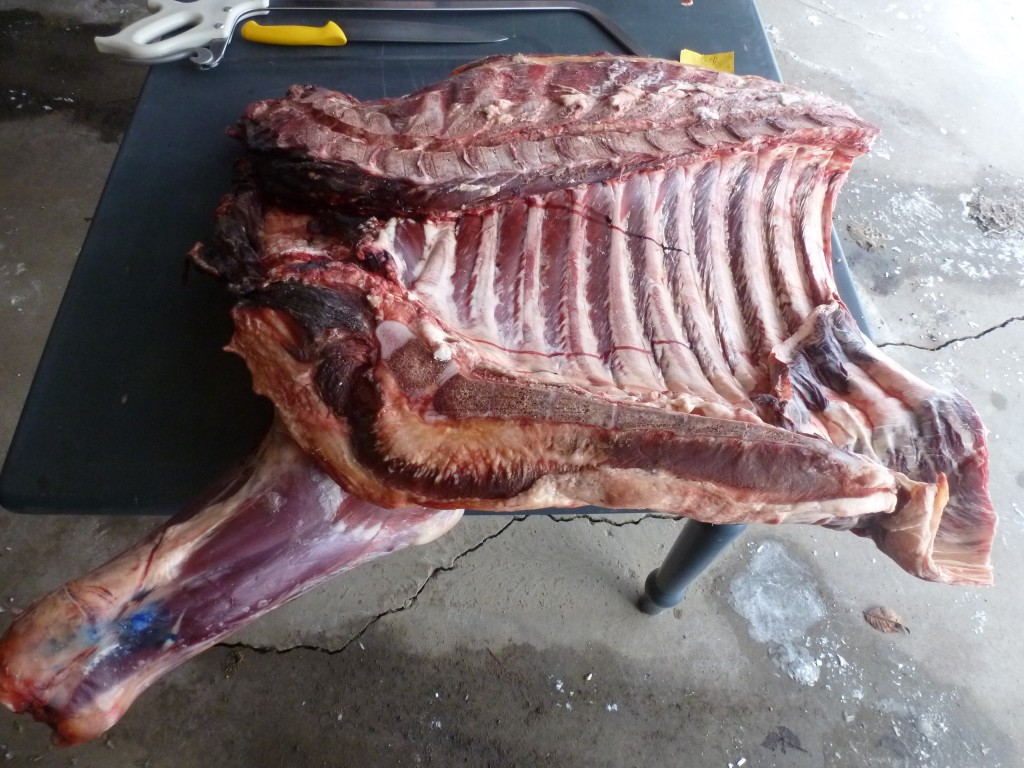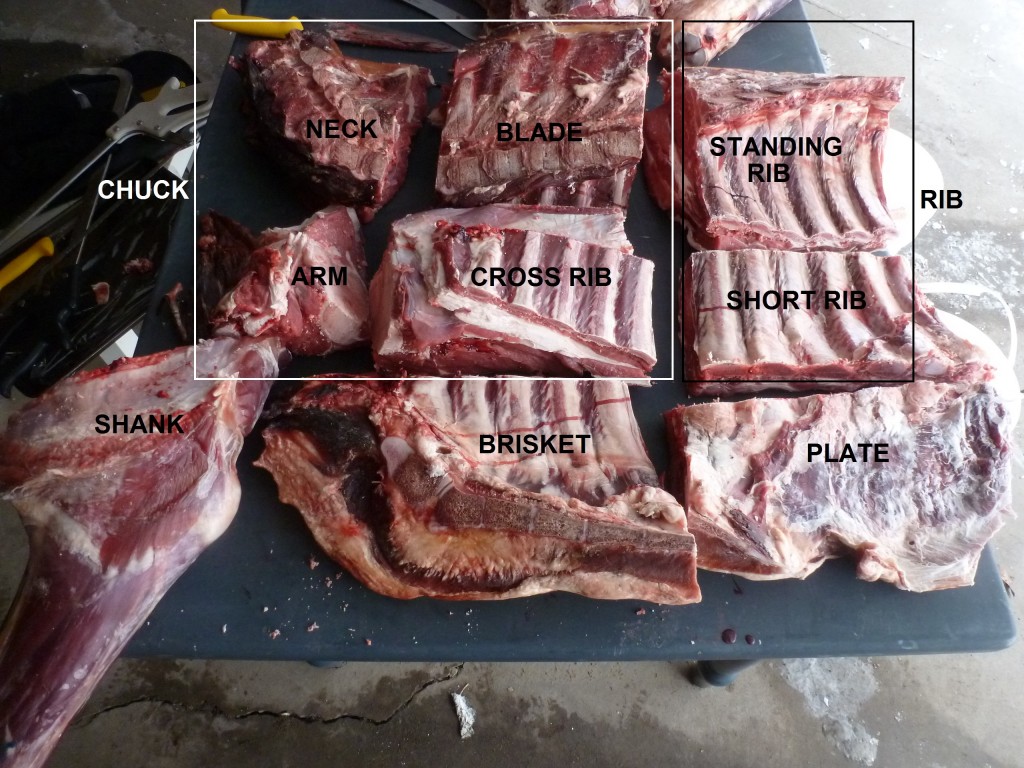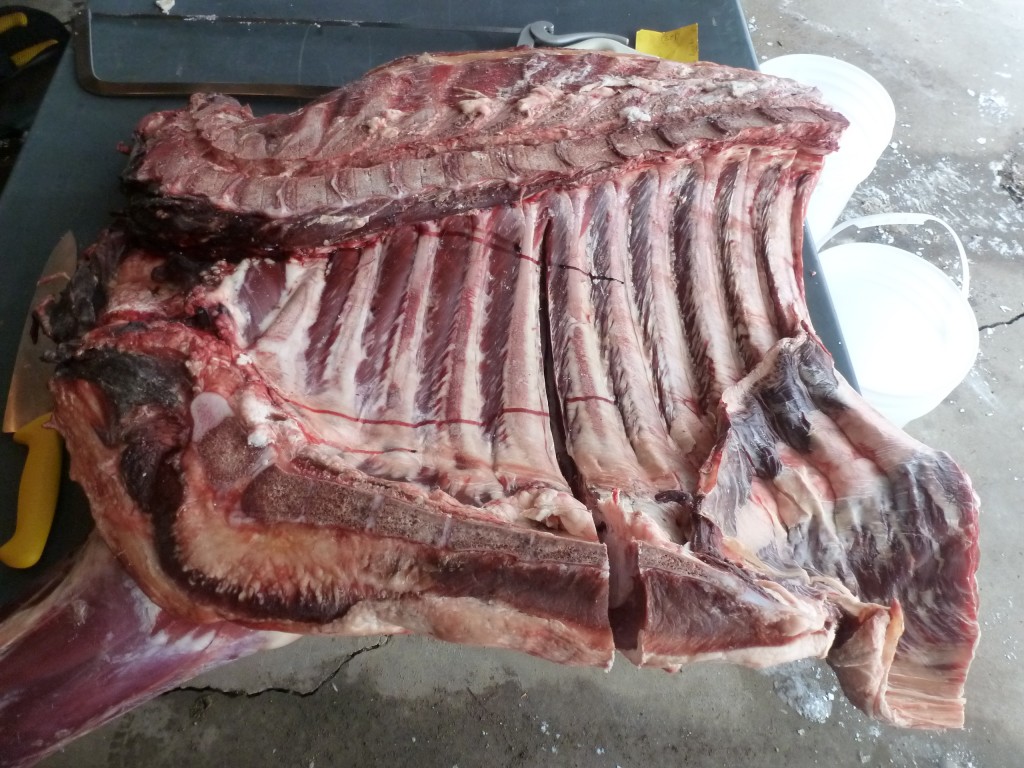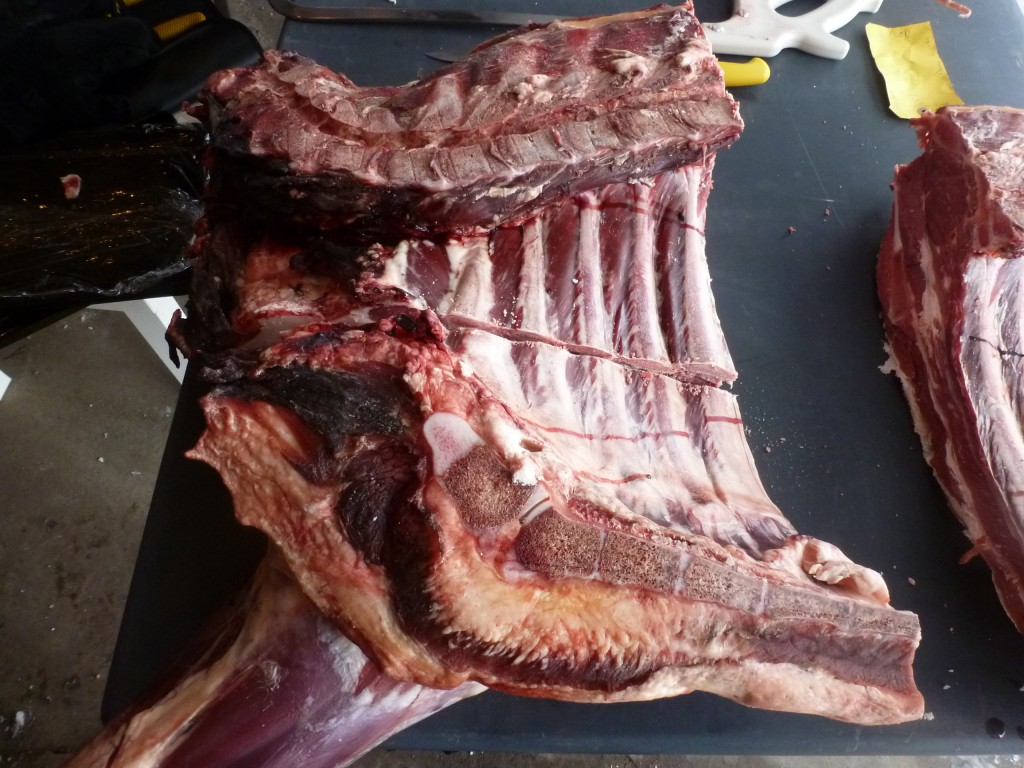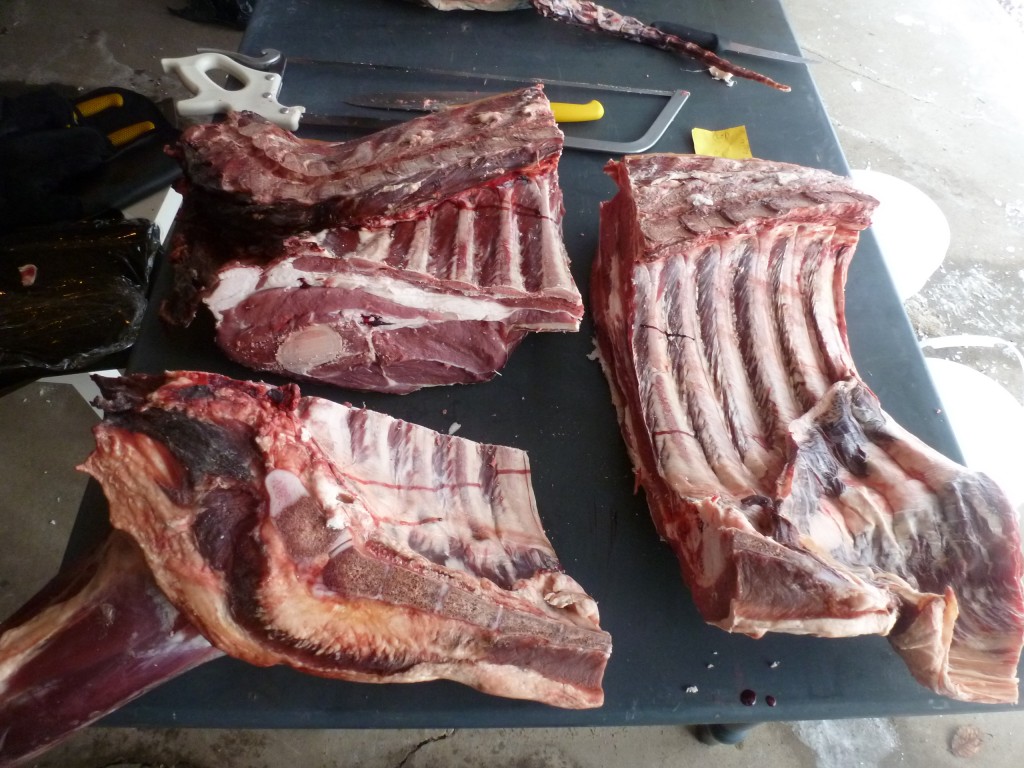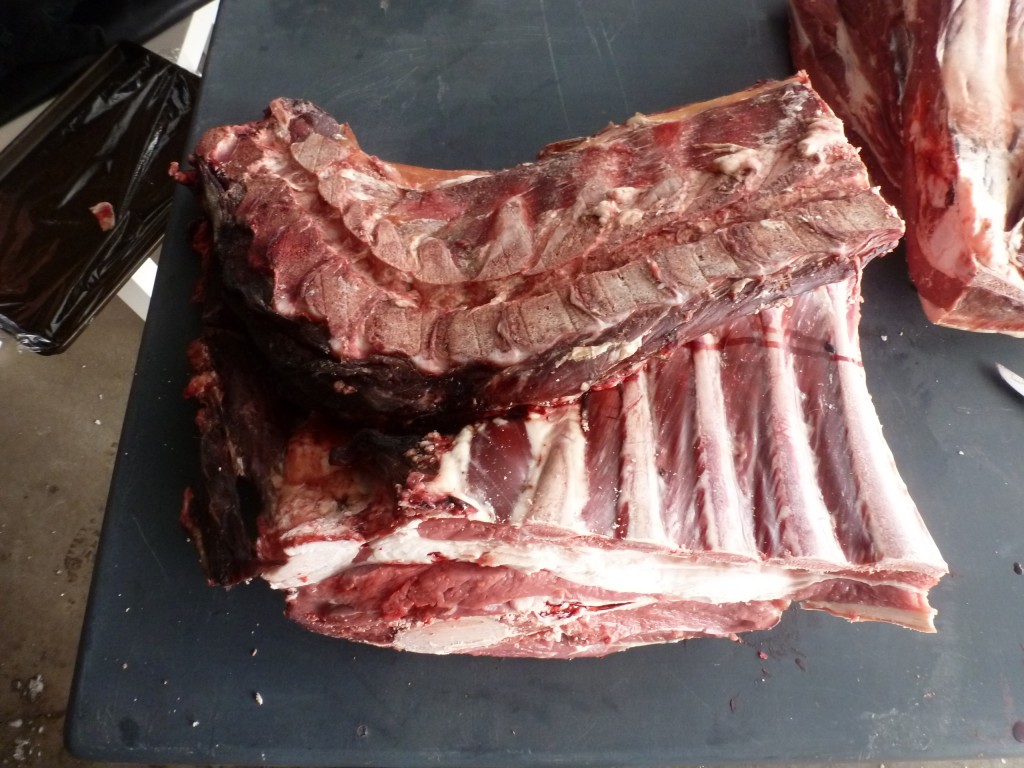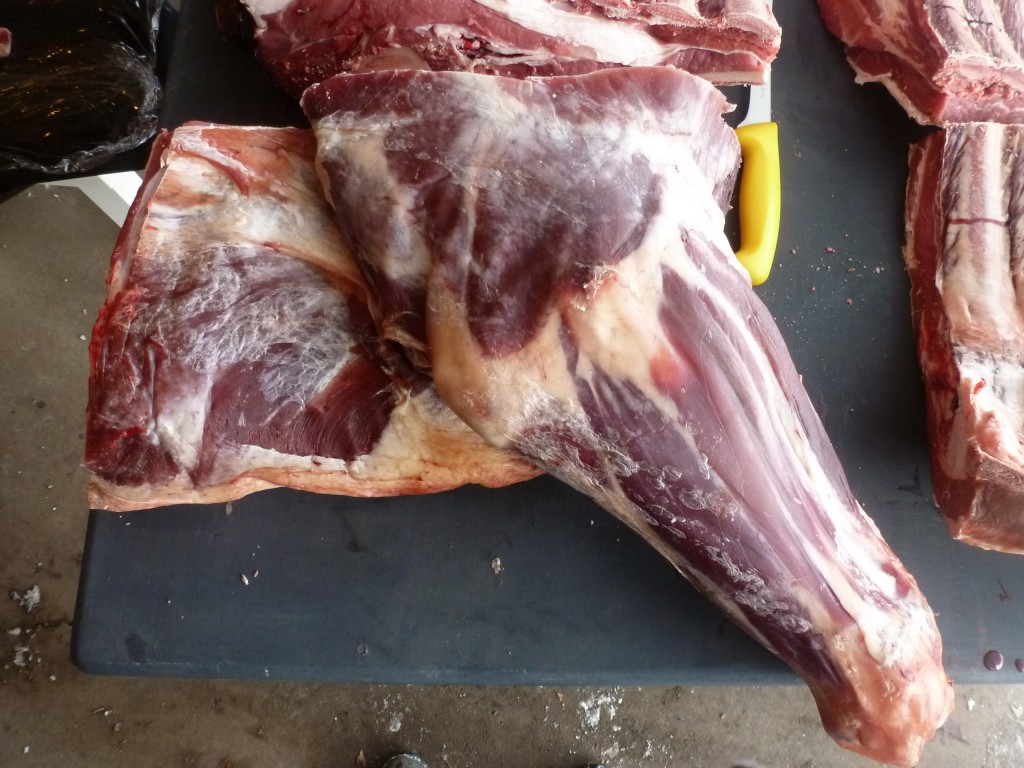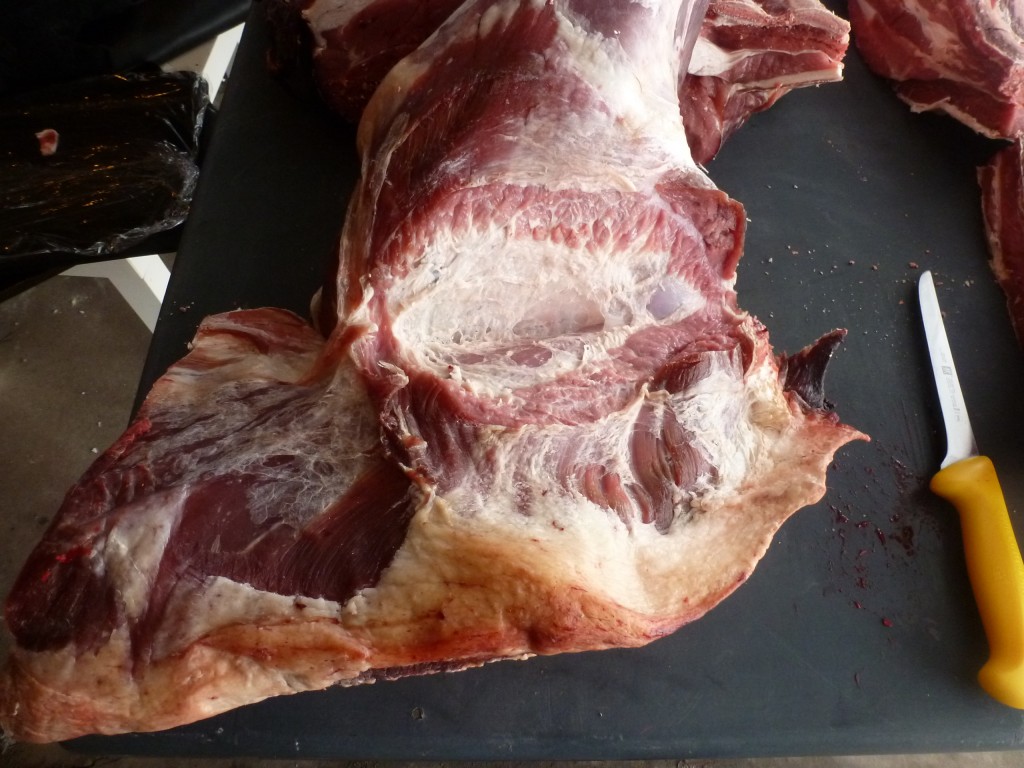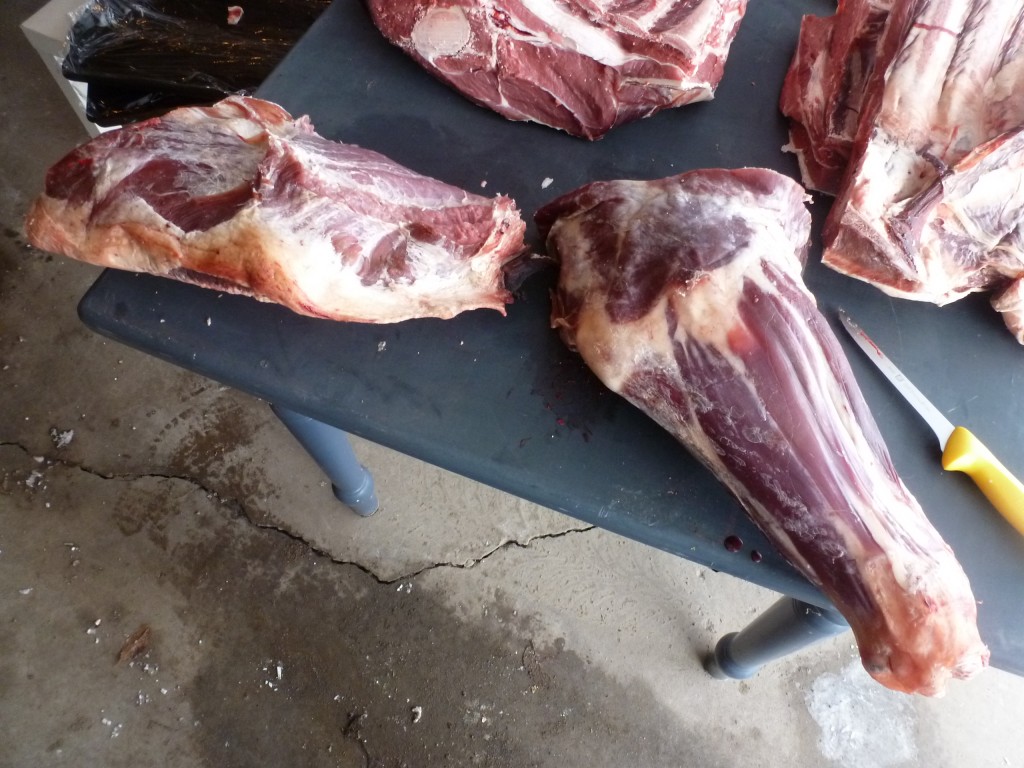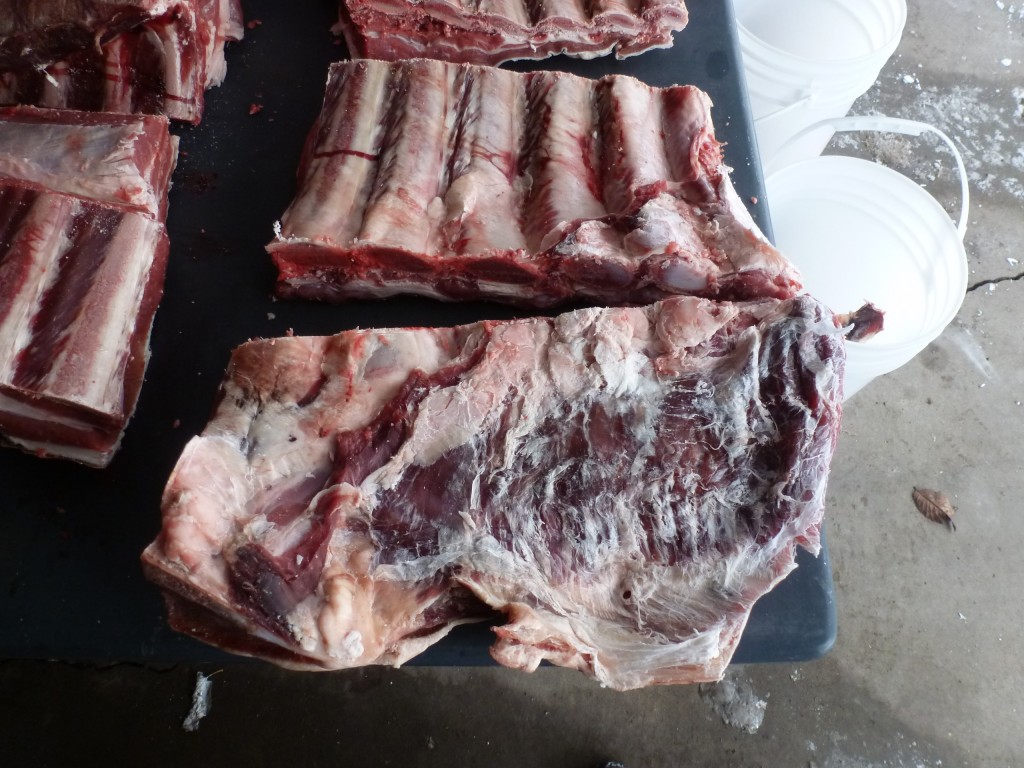This is a forequarter of nouveau beef from Nature’s Green Acres. A side of beef is split into a forequarter and a hindquarter by cutting between the twelfth and thirteenth rib, which is the last rib.
Cutting beef is more complicated than cutting pork, and I find I sometimes lose my way and forget where I am and what piece of meat I’m looking at. To give you some idea of what we intend to accomplish in this post, here is a picture of the forequarter afterwards, broken into its subprimals.
The first cut I make is between the fifth and sixth ribs. At the top right of the picture below, above the backbone, is the standing rib subprimal. This is the most expensive part of the forequarter, and the origin of rib steaks and prime rib roasts. We should be mindful of this as we cut so that we’re careful not to damage the meat there. Use a knife to cut between the ribs, then a handsaw to break through the sternum, at the bottom, and the backbone, at the top. Finish the cut through the loin with a knife.
Separating the Chuck from the Brisket
We’ll start with the forward piece of meat we just separated. The top part of this slab is the chuck, or square-cut chuck. The lower part, at the sternum, is the brisket, with the attached foreshank. I divide these two by making a horizontal cut a few inches below the neck.
Dividing the Chuck into Neck, Blade, Arm, and Cross Rib
Here is the whole chuck, or square-cut chuck, that we just separated:
The forward section of the chuck contains the neck and part of the forearm of the cow. I separate this portion by making a vertical cut at the very base of the neck, as shown below.
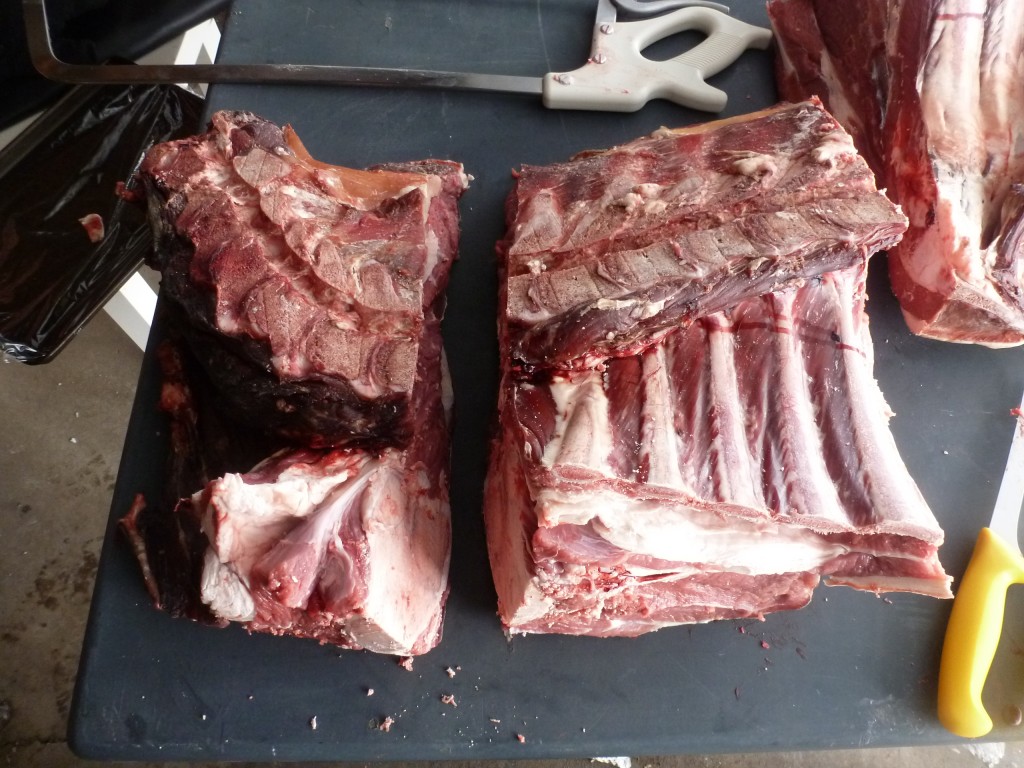
Next I make two horizontal cuts to separate the neck from the arm (top left and bottom left), and the blade from the cross rib (top right and bottom right):
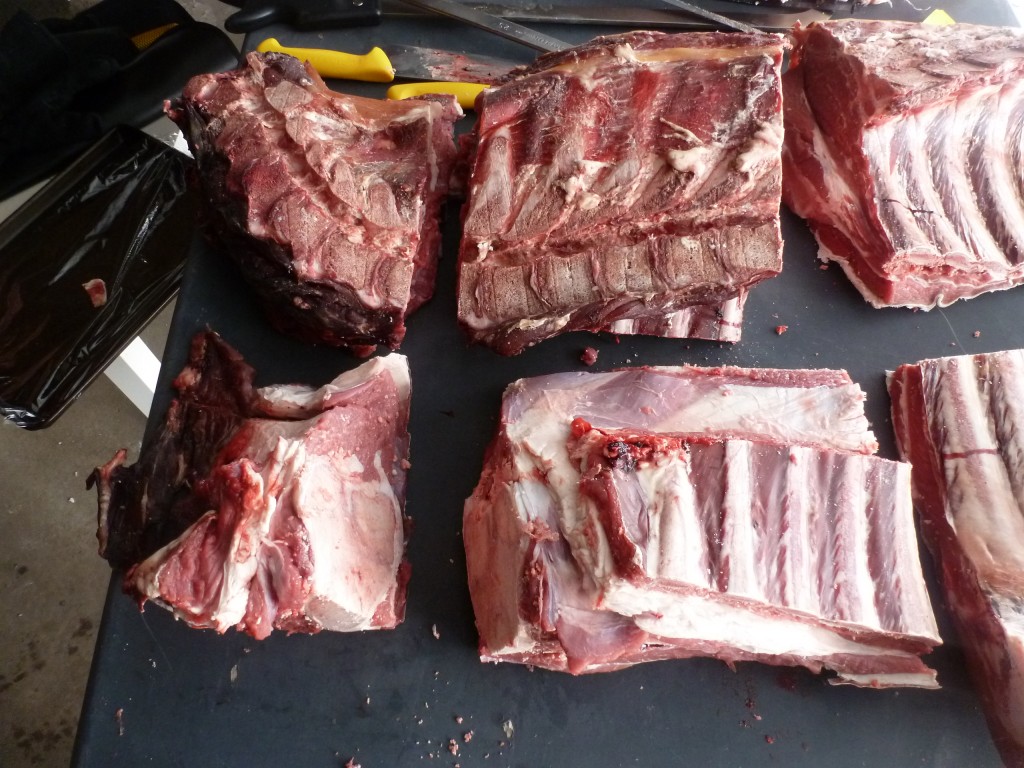
Separating the Shank from the Brisket
This is the only part of breaking the forequarter that uses a natural seam instead of a handsaw.
Lift the shank from the brisket to expose the seam, then follow it with a boning knife until the shank is removed.
The brisket and removed shank:
Separating the Standing Rib
We now move to the hind part of the forequarter. A horizontal cut is made about six inches below the backbone to separate the standing rib from the cross rib.
Separating the Short Rib from the Plate
Finally another horizontal cut separates the short rib from the plate.
To recap, the entire beef forequarter, broken into subprimals:
